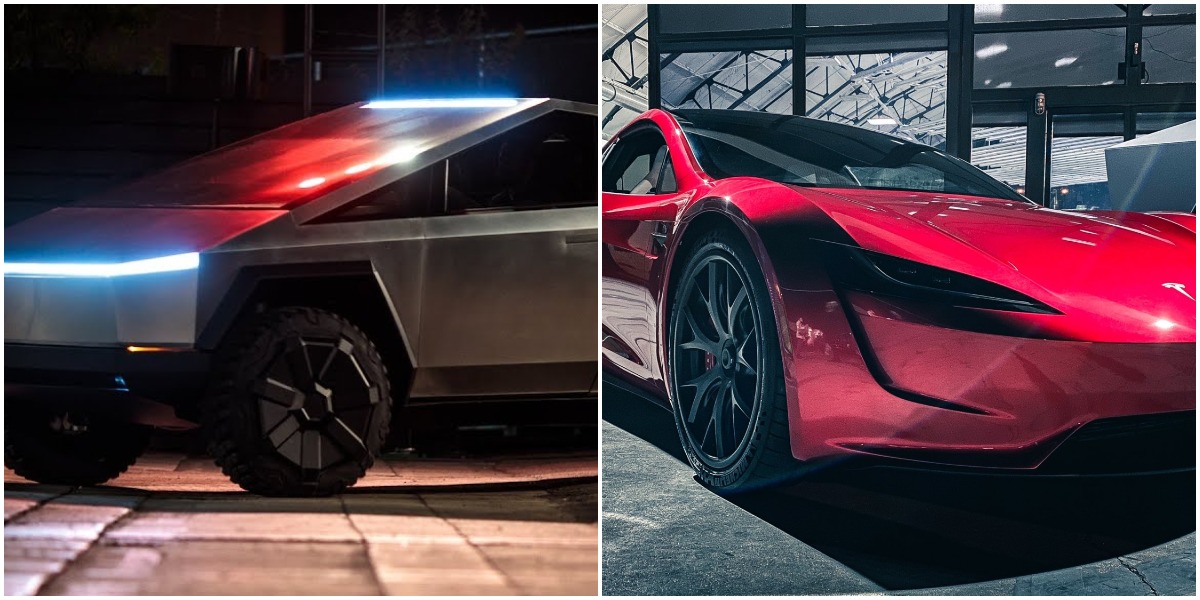
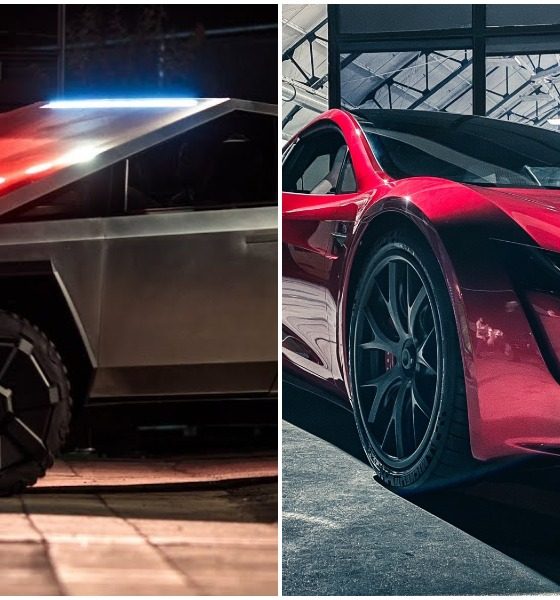
News
Tesla’s Battery strategy is in preparation for two of its most anticipated vehicles
Tesla has continued to attempt to improve its battery packs and cells despite being the industry leader in EV battery tech. Interestingly enough, the electric car company located in Silicon Valley has had some of the best vehicles in terms of EV range in the past ten years. While other car companies were struggling to equip their attempts at electric cars with 100 miles of usable range, Tesla was and has been pushing the envelope since the original Roadster in 2008.
But even though the company has facilitated several vehicles in its fleet to have over 300 miles of range, and one with over 400 miles, it hasn’t been enough to let Tesla’s battery engineers rest. Even though the Model S Long Range Plus configuration packs 402 miles of electric range, which is plenty for most drivers, Tesla has several cars in the works that pack considerably more range than that. These are also not your “run of the mill” EVs, either. They are the Tri-Motor Cybertruck and the next-gen Roadster.
Batteries are what drive an EV to be all that it can be. They are responsible for the range and the performance of the car, along with the motors and engineering of the chassis and body. However, battery tech is ultimately what decides if a vehicle is going to be a successful electric car or just another one to add to the list of underperforming automobiles.
The key to building a great electric car, like anything else, is starting at the foundation. When you want to make a great pizza, you start with great dough. When you want to make a great EV, you start with the battery cells.
The problem with batteries is that there are no two cells that are the same when the materials that are used within are concerned. Not only that, but sometimes the elements that make some batteries stable and help with energy density are controversial. This is the case with cobalt.
But before I go into a spiel about Tesla’s use of cobalt and how the company responsibly sources it, let’s stay on topic.
Tesla’s battery teams in Canada, led by Jeff Dahn at Dalhousie University, released a new paper this week that indicated an electrolyte solution could contribute to increased battery energy density, and could lead to an extended lifespan.
This is a preview from our weekly newsletter. Each week I go ‘Beyond the News’ and handcraft a special edition that includes my thoughts on the biggest stories, why it matters, and how it could impact the future.
A big thanks to our long-time supporters and new subscribers! Thank you.
The solution would be used to combat the effects of degradation, and would ultimately lead to a longer life span and increased energy density. Enter the Tri-Motor Cybertruck and Roadster.
Both of these cars have range ratings that are well above the Model S Long Range Plus variant. The Cybertruck’s Tri-Motor will have 500+ miles of range, and the Roadster will have 620 miles.
However, Tesla’s current cells are not capable of holding this amount of range. If the batteries are not capable of holding excessive amounts of energy density, they will not perform in the fashion that they were intended. Therefore, Tesla has to continue developing its cells to promote longer-range driving and a long lifespan.
Starting with the Cybertruck, which has an estimated range of “500+ miles,” according to Tesla’s website. Currently, Tesla does not have a battery pack released that is capable of that kind of range, so the batteries must improve. The Tri-Motor setup will certainly help with the towing capacity and acceleration. Still, the battery pack within the Cybertruck has to work efficiently to not only supply power to those motors, but it also has to maintain energy so it can keep range at a reasonable level.
With the Roadster, things are slightly different. This car will (more than likely) not be towing things or have excessive amounts of cargo in the back, so there isn’t as much involved with maintaining range through laborious work. However, it is one of the fastest cars ever made, and Elon Musk has said in the past that the range of the Roadster will be over 1,000 kilometers or 621 miles.
Ultimately, the development of Tesla’s cells has to continue to improve. Obviously, the battery packs for both of the vehicles that were talked about in this article will have battery packs that are larger than the 100 kWh packs that Tesla puts in the Performance variants of the Model S and Model X. But there is a chance that Tesla equips the Cybertruck and Roadster with smaller, more energy-dense batteries like the 2170 cells that are used in the Model 3 and Model Y.
Lucid’s reveal of the 517-mile range that their new EV, the Air, has, certainly must have lit a fire under the rear-ends of Tesla’s battery engineers. Tesla has had a reputation of being the EV company with the best range, and now that Lucid “technically” has the title for that, even though the car isn’t in production, Tesla will likely be gearing up for a takeback of that label.
Tesla’s battery strategy from here on out will be interesting considering other auto companies have proven they are capable of competing in terms of EV range. There is still the fact that Tesla is actually producing these cars on a massive scale and we know that the company’s cars can perform, we don’t know this about the other vehicles yet.
Please consider Subscribing and joining me next week as I go ‘Beyond the News’

Elon Musk
Elon Musk proposes Grok 5 vs world’s best League of Legends team match
Musk’s proposal has received positive reception from professional players and Riot Games alike.
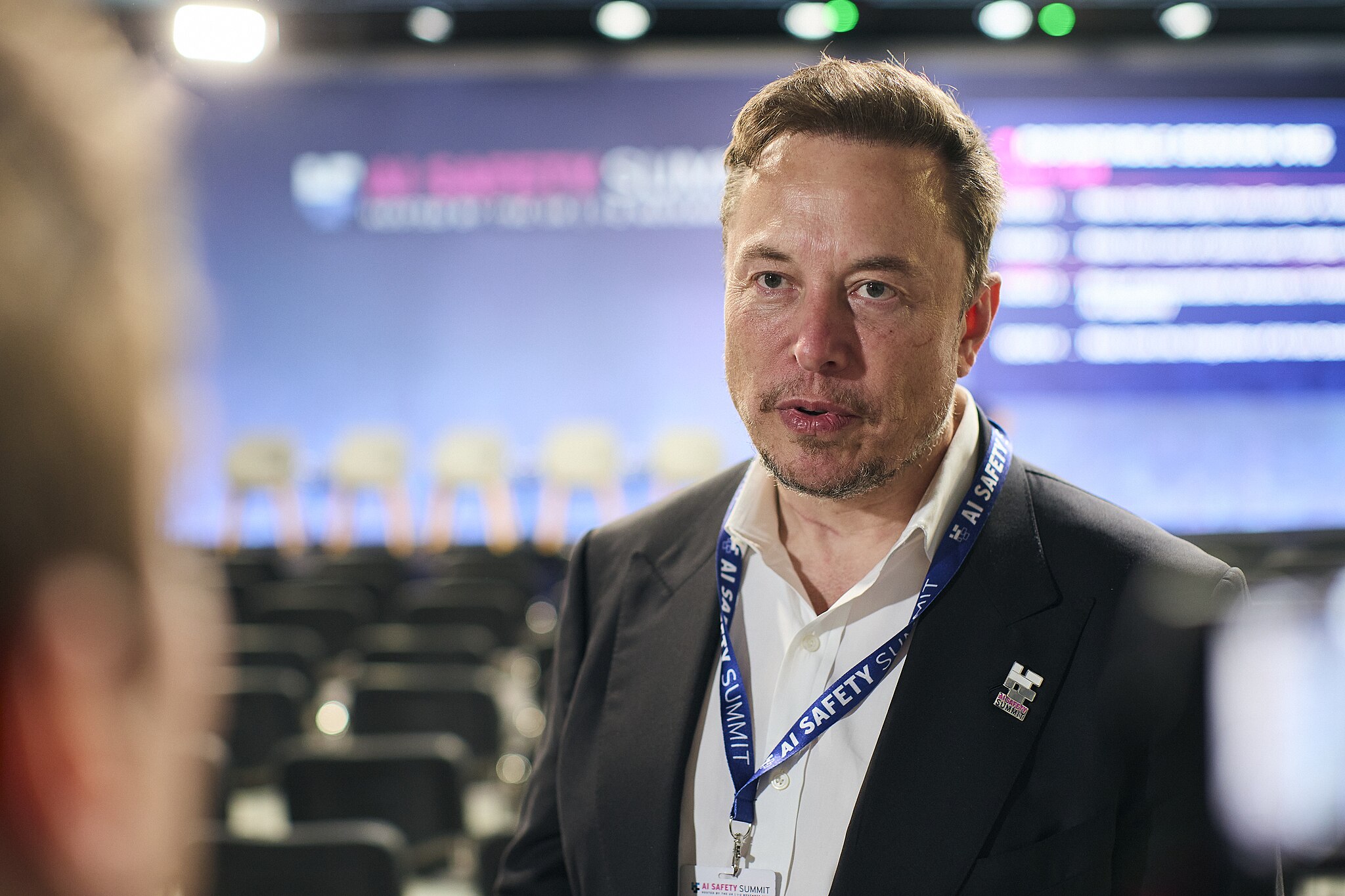
Elon Musk has proposed a high-profile gaming challenge for xAI’s upcoming Grok 5. As per Musk, it would be interesting to see if the large language model could beat the world’ best human League of Legends team with specific constraints.
Musk’s proposal has received positive reception from professional players and Riot Games alike, suggesting that the exciting exhibition match might indeed happen.
Musk outlines restrictions for Grok
In his post on X, Musk detailed constraints to keep the match competitive, including limiting Grok to human-level reaction times, human-speed clicking, and viewing the game only through a camera feed with standard 20/20 vision. The idea quickly circulated across the esports community, drawing commentary from former pros and AI researchers, as noted in a Dexerto report.
Former League pro Eugene “Pobelter” Park expressed enthusiasm, offering to help Musk’s team and noting the unique comparison to past AI-versus-human breakthroughs, such as OpenAI’s Dota 2 bots. AI researcher Oriol Vinyals, who previously reached Grandmaster rank in StarCraft, suggested testing Grok in RTS gameplay as well.
Musk welcomed the idea, even responding positively to Vinyals’ comment that it would be nice to see Optimus operate the mouse and keyboard.
Pros debate Grok’s chances, T1 and Riot show interest
Reactions weren’t universally optimistic. Former professional mid-laner Joedat “Voyboy” Esfahani argued that even with Grok’s rapid learning capabilities, League of Legends requires deep synergy, game-state interpretation, and team coordination that may be difficult for AI to master at top competitive levels. Yiliang “Doublelift” Peng was similarly skeptical, publicly stating he doubted Grok could beat T1, or even himself, and jokingly promised to shave his head if Grok managed to win.
T1, however, embraced the proposal, responding with a GIF of Faker and the message “We are ready,” signaling their willingness to participate. Riot Games itself also reacted, with co-founder Marc Merrill replying to Musk with “let’s discuss.” Needless to say, it appears that Riot Games in onboard with the idea.
Though no match has been confirmed, interest from players, teams, and Riot suggests the concept could materialize into a landmark AI-versus-human matchup, potentially becoming one of the most viewed League of Legends events in history. The fact that Grok 5 will be constrained to human limits would definitely add an interesting dimension to the matchup, as it could truly demonstrate how human-like the large language model could be like in real-time scenarios.
Tesla has passed a key milestone, and it was one that CEO Elon Musk initially mentioned more than nine years ago when he published Master Plan, Part Deux.
As per Tesla China in a post on its official Weibo account, the company’s Autopilot system has accumulated over 10 billion kilometers of real-world driving experience.
Tesla China’s subtle, but huge announcement
In its Weibo post, Tesla China announced that the company’s Autopilot system has accumulated 10 billion kilometers of driving experience. “In this respect, Tesla vehicles equipped with Autopilot technology can be considered to have the world’s most experienced and seasoned driver.”
Tesla AI’s handle on Weibo also highlighted a key advantage of the company’s self-driving system. “It will never drive under the influence of alcohol, be distracted, or be fatigued,” the team wrote. “We believe that advancements in Autopilot technology will save more lives.”
Tesla China did not clarify exactly what it meant by “Autopilot” in its Weibo post, though the company’s intense focus on FSD over the past years suggests that the term includes miles that were driven by FSD (Beta) and Full Self-Driving (Supervised). Either way, 10 billion cumulative miles of real-world data is something that few, if any, competitors could compete with.
Advertisement
–>
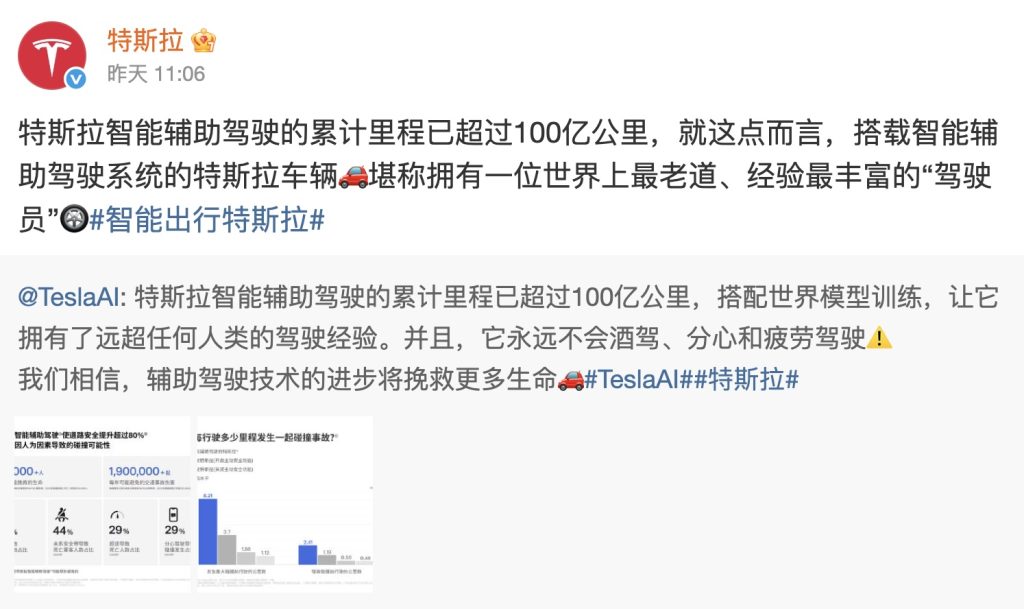
Elon Musk’s 10-billion-km estimate, way back in 2016
When Elon Musk published Master Plan Part Deux, he outlined his vision for the company’s autonomous driving system. At the time, Autopilot was still very new, though Musk was already envisioning how the system could get regulatory approval worldwide. He estimated that worldwide regulatory approval will probably require around 10 billion miles of real-world driving data, which was an impossible-sounding amount at the time.
“Even once the software is highly refined and far better than the average human driver, there will still be a significant time gap, varying widely by jurisdiction, before true self-driving is approved by regulators. We expect that worldwide regulatory approval will require something on the order of 6 billion miles (10 billion km). Current fleet learning is happening at just over 3 million miles (5 million km) per day,” Musk wrote.
It’s quite interesting but Tesla is indeed getting regulatory approval for FSD (Supervised) at a steady pace today, at a time when 10 billion miles of data has been achieved. The system has been active in the United States and has since been rolled out to other countries such as Australia, New Zealand, China, and, more recently, South Korea. Expectations are high that Tesla could secure FSD approval in Europe sometime next year as well.
News
Elon Musk’s Boring Company reveals Prufrock TBM’s most disruptive feature
As it turns out, the tunneling startup, similar to other Elon Musk-backed ventures, is also dead serious about pursuing reusability.
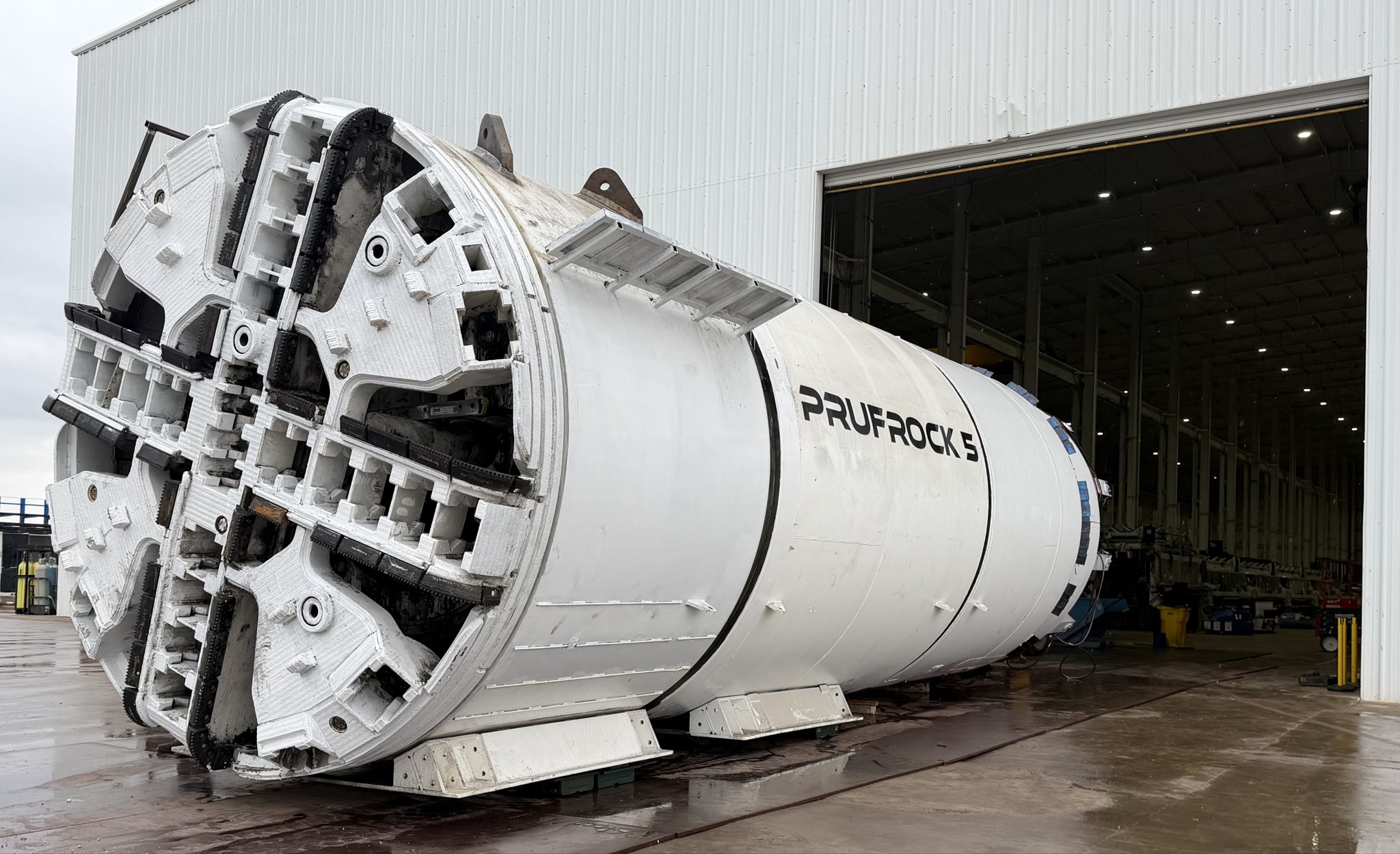
The Boring Company has quietly revealed one of its tunnel boring machines’ (TBMs) most underrated feature. As it turns out, the tunneling startup, similar to other Elon Musk-backed ventures, is also dead serious about pursuing reusability.
Prufrock 5 leaves the factory
The Boring Company is arguably the quietest venture currently backed by Elon Musk, inspiring far fewer headlines than his other, more high-profile companies such as Tesla, SpaceX, and xAI. Still, the Boring Company’s mission is ambitious, as it is a company designed to solve the problem of congestion in cities.
To accomplish this, the Boring Company would need to develop tunnel boring machines that could dig incredibly quickly. To this end, the startup has designed Prufrock, an all-electric TBM that’s designed to eventually be fast enough as an everyday garden snail. Among TBMs, such a speed would be revolutionary.
The startup has taken a step towards this recently, when The Boring Company posted a photo of Prufrock-5 coming out of its Bastrop, Texas facility. “On a rainy day in Bastrop, Prufrock-5 has left the factory. Will begin tunneling by December 1. Hoping for a step function increase in speed,” the Boring Company wrote.
Prufrock’s quiet disruption
Interestingly enough, the Boring Company also mentioned a key feature of its Prufrock machines that makes them significantly more sustainable and reusable than conventional TBMs. As per a user on X, standard tunnel boring machines are often left underground at the conclusion of a project because retrieving them is usually more expensive and impractical than abandoning them in the location.
As per the Boring Company, however, this is not the case for its Prufrock machines, as they are retrieved, upgraded, and deployed again with improvements. “All Prufrocks are reused, usually with upgrades between launches. Prufrock-1 has now dug six tunnels,” the Boring Company wrote in its reply on X.
The Boring Company’s reply is quite exciting as it suggests that the TBMs from the tunneling startup could eventually be as reusable as SpaceX’s boosters. This is on brand for an Elon Musk-backed venture, of course, though the Boring Company’s disruption is a bit more underground.
News
Tesla accused of infringing robotics patents in new lawsuit

Tesla is being accused of infringing robotics patents by a company called Perrone Robotics, which is based out of Charlottesville, Virginia.
The suit was filed in Alexandria, Virginia, and accuses Tesla of knowingly infringing upon five patents related to robotics systems for self-driving vehicles.
The company said its founder, Paul Perrone, developed general-purpose robotics operating systems for individual robots and automated devices.
Perrone Robotics claims that all Tesla vehicles utilizing the company’s Autopilot suite within the last six years infringe the five patents, according to a report from Reuters.
Tesla’s new Safety Report shows Autopilot is nine times safer than humans
One patent was something the company attempted to sell to Tesla back in 2017. The five patents cover a “General Purpose Operating System for Robotics,” otherwise known as GPROS.
The GPROS suite includes extensions for autonomous vehicle controls, path planning, and sensor fusion. One key patent, U.S. 10,331,136, was explicitly offered to Tesla by Perrone back in 2017, but the company rejected it.
The suit aims to halt any further infringements and seeks unspecified damages.
This is far from the first suit Tesla has been involved in, including one from his year with Perceptive Automata LLC, which accused Tesla of infringing on AI models to interpret pedestrian/cyclist intent via cameras without licensing. Tesla appeared in court in August, but its motion to dismiss was partially denied earlier this month.
Tesla also settled a suit with Arsus LLC, which accused Autopilot’s electronic stability features of infringing on rollover prevention tech. Tesla won via an inter partes review in September.
Most of these cases involve non-practicing entities or startups asserting broad autonomous vehicle patents against Tesla’s rapid iteration.
Tesla typically counters with those inter partes reviews, claiming invalidity. Tesla has successfully defended about 70 percent of the autonomous vehicle lawsuits it has been involved in since 2020, but settlements are common to avoid discovery costs.
The case is Perrone Robotics Inc v Tesla Inc, U.S. District Court, Eastern District of Virginia, No. 25-02156. Tesla has not yet listed an attorney for the case, according to the report.








